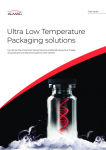Amgen v Sanofi ruling: It is time to kiss goodbye to broad, functional patent claims for antibodies

Last month saw the US Court of Appeals for the Federal Circuit invalidate two Amgen antibody patents, finding that their functional claims were too broad, citing a lack of enablement.
The litigation, which has been ongoing since late 2014, centers on patents covering PCSK9 inhibitor monoclonal antibody drugs for lowering cholesterol. These antibodies bind to PCSK9 and inhibit it from binding to low-density lipoprotein cholesterol receptor (LDL-R), preventing LDL receptor destruction, and resulting in lower serum cholesterol.
The claims have now gone up to the Federal Circuit on both the issue of written description – on whether they are adequately described in the specification - and on the issue of enablement – on whether someone can make use of them without undue experimentation.
February’s judgement was a win for Sanofi, which had challenged the validity of the Amgen patents through a case at the US District Court for the District of Delaware. The Delaware court granted Sanofi summary judgment on a lack of enablement, triggering Amgen to move to appeal to the Federal Circuit.
Kevin O'Connor, partner in Neal Gerber's IP practice and PhD in neuroscience, has been closely monitoring these developments.
An advisor to clients in the biologics industry on IP issues, the legal expert talked to us about the implications of increased patent scrutiny for biologics manufacturers and their incentives for R&D as a result of this latest court ruling.
Result tracks outcomes in small molecule patent disputes
“The trend for the last several years has been pointing in this direction so it is not too surprising that the court here ruled these claims as invalid,” said O’Connor.
The IP specialist said the implications are that claims that define an antibody solely in terms of what that antibody does, whether it is binding to a particular target or blocking interactions between that target and another molecule, are “now going to be more vulnerable to invalidation as lacking written description and enablement.”
The US courts had already held genus claims to small molecules invalid for failing to meet the enablement requirement, he added, referencing the Wyeth, Enzo, and Idenix cases. “Those cases touched on the same issue, of when a claim describes a molecule in functional terms rather than in structural terms, and therefore encompasses any molecule that performs that function - patentees then run into issues around written description and enablement.”
The claims at the center of the Amgen V Sanofi ruling are purely functional, he said. The issue of how many antibodies fall within the scope of the genus was hotly disputed in the case.
“The patentee, at least in this context, is always going to argue the scope is relatively limited, in the order of a couple of hundred, and therefore, from a written description perspective, a handful of examples are sufficient to demonstrate that the patentee has possession of that genus.”
Additionally, from the enablement perspective, the patentee will argue that it is not too hard to test a few hundred antibodies.
“But the challenger takes the position that there are millions or billions of antibodies that fall within the scope of this genus and the patentee can’t possibly have described all of them adequately and it would also be an undue burden to test millions or billions of compounds.
“So looking at the outcome of these cases, you have to wonder if it is ever practically possible for a patentee to put in enough disclosure to support this kind of claim - one that is purely functional.”
Protection still possible, incentives to R&D remain
The upshot for patentees, though, is the claims that do recite structural features of an antibody, whether it is the CDRs or the heavy and light chain variable domains, have always been, and likely will continue to be useful in protecting innovative antibodies, said O’Connor.
“There is still valuable protection to be had, and there continues to be an incentive for innovator companies to develop antibodies. What is reduced here is the ability to secure patent claims that do not recite the structures disclosed.”
While innovators still have ability via the structural type claims to get some protection against biosimilars – biosimilars have to match the amino acid sequence of the antibodies the patentee has disclosed – they could have more trouble building a fence around follow-up antibodies that may be of the same class, that bind to the same target, but have different structural features, he added.
Going forward the industry understands this, said O’Connor, but he noted there will still be issues around applications and patents that were drafted five or six years ago.
“Those patents were not drafted with the current state of the law in mind. Maybe there was some foresight in the drafting process, but they certainly did not have the benefits of these decisions at the time of their being drafted. I think you will continue to see the same kind of issue percolate up through the courts.”
With newer technology that is coming on board - for example cellular therapies like CAR-T – where there are similarly structured claims that talk about chimeric antigen receptors that bind to a particular target – the IP expert said he would expect that those claims will receive the same level of scrutiny as monoclonal antibodies have. However, there may be some distinctions in that space, added O’Connor.
“In the CAR-T space the claim might be directed to a cell, and one particular feature of that cell is the chimeric antigen receptor that binds to a particular target. So there might be a slightly different analysis when it is more of a nested feature, where the functional feature is part of a larger whole. Whereas, in the Amgen V Sanofi case, the functional description of the antibody was the entirety of the claim.
“There may be a distinction to be made there, and even in the antibody space we could envisage claims on methods of treatments, dosing regimens, or formulations for antibodies, whereby the antibody portion is nested within the larger construct of a claim.
“So I think this issue might get revisited or fleshed out by the courts in the coming years.”
But for those broader composition of matter claims, the days of defining antibodies purely in terms of function are gone, he said. It is going to have to be tied, at some level, to structural aspects - such as an exact recitation of a sequence of amino acids, a percent identity to such a sequence, or identifying particular amino acids that might be substituted within the sequence disclosed in the patent application.
"As always, patentees need to have fallback positions built into their applications with some expectation that the cases will continue to follow the same pattern regardless of the technology at issue – whether it is small molecules, antibodies or cellular therapy, or others.”
Competitive arena
O’Connor ultimately sees the court coming down in support of Sanofi’s argument against Amgen as a bonus for innovation.
If those broad, functional claims were allowed to stand there could be even more of a chilling impact on innovation around PCSK9 as there would be no room for other companies to then make improvements within that class of antibodies, he said.
“Oftentimes, the next in class antibody has some enhanced features over that first in class version so if broad, functional claims were upheld, we could lose out on the incremental improvements within that class - those aspects need to be considered as well from the competition side of things.”















